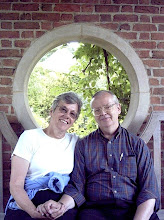The spiritual aim is reached neither by many works, nor by few, but by grace alone. As the saint Ibn 'Ata-Allah says in his counsels: If you were destined to reach Him only after the destruction of your faults and the abandonment of all your claims, you would never reach Him.... He absorbs your quality into His and your attributes into His and thus brings you back by means of what comes to you from Him, not by means of what comes to Him from you.
— Kennerth Cragg, The Wisdom of the Sufis, XLII, pp. 40-41.
It was related of Sari al-Saqati of Baghdad, who had a shop in the bazaar, that when the word came of a fire in which his shop was burnt, he said: Then I am set free from the care of it. Later, there came word that his shop was intact but those around it had been destroyed. Then Sari gave all he possessed to the poor and took the way of a sufi.
— Kenneth Cragg, Ibid., XLV, p. 41.
One came to the Beloved's door and knocked. And a voice from within whispered: 'Who is there?' And the lover answered: 'It is I.'
Then the voice said: 'There is no room in this house for thee and me.' And the door was not opened to him. So the lover went back into the desert and fasted and prayed. At the end of a year, he returned once more to the Beloved's door and knocked.
And the voice from within said again: 'Who is there?' This time, the lover, having learned self-renunciation, answered: 'It is thyself.' And the door was opened.
— Kenneth Cragg, Ibid., LXXIX, p. 56.
The problems of Art. New artists have been obtained. These do not object to, and indeed argue enthusiastically for, the rationalization process. Production is up. Quality-control devices have been installed at those points where the interests of artists and audience intersect. Shipping and distribution have been improved out of all recognition. (It is in this area, they say in Paraguay, that traditional practices were most blameworthy.) The rationalized art is dispatched from central art dumps to regional art dumps, and from there into the lifestreams of cities. Each citizen is given as much art as his system can tolerate. Marketing considerations have not been allowed to dictate product mix, rather, each artist is encouraged to maintain, in his software, highly personal, even idiosyncratic, standards (the so-called "hand of the artist" concept). Rationalization produces simpler circuits and, therefore, a statement in symbolic logic. The statement is then "minimized" by various clever methods. The simpler statement is translated back into the design of a simpler circuit. Foamed by a number of techniques, the art is then run through heavy steel rollers. Flip-flop switches control its further development. Sheet art is generally dried in smoke and is dark brown in color. Bulk art is air-dried, and changes color in particular historical epochs.
— Donald Barthelme, Sixty Stories, "Rationalization," p. 130.
Subscribe to:
Post Comments (Atom)

No comments:
Post a Comment